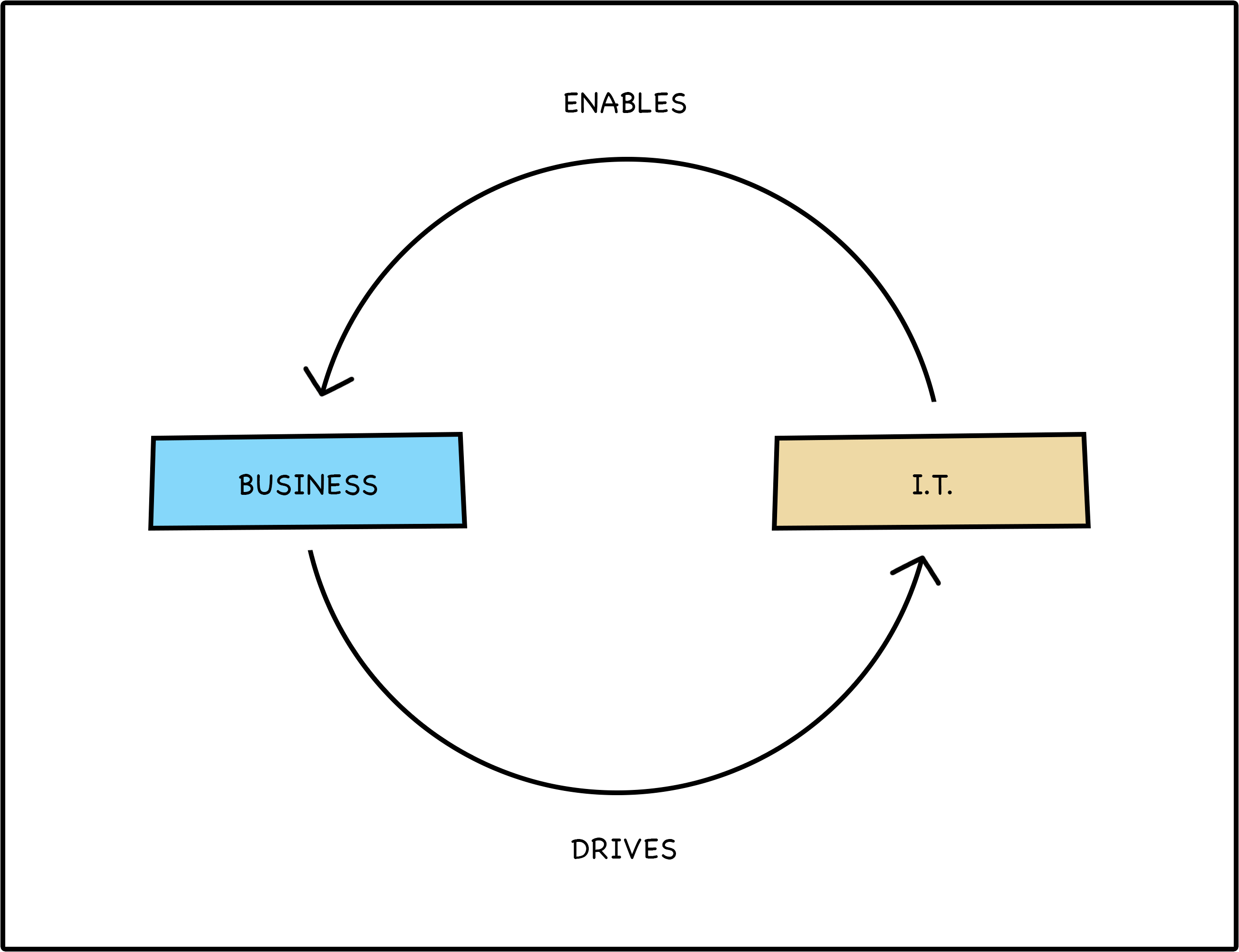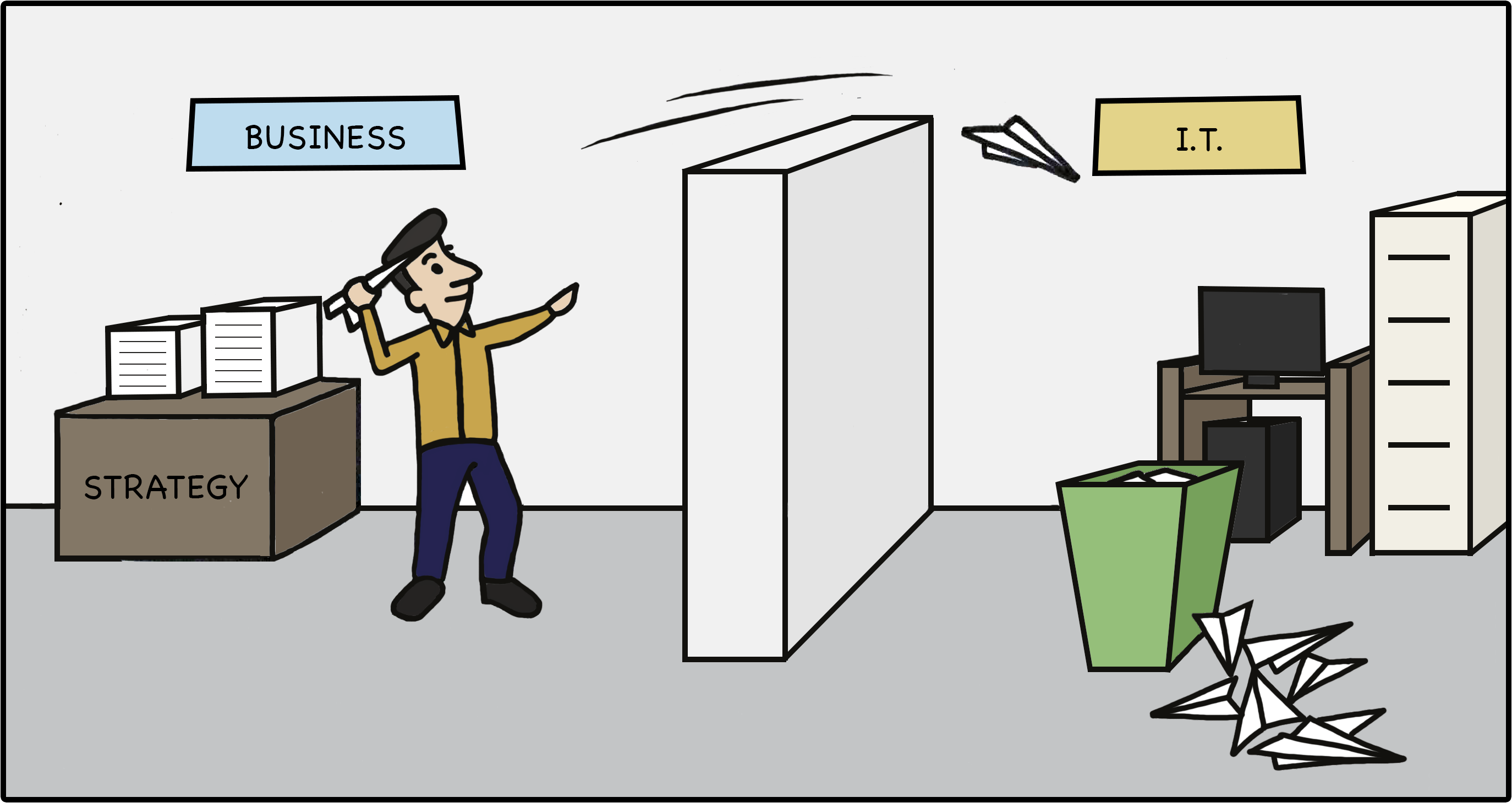In most companies, business and IT teams work in silos. They often perceive each other as inefficient working units that have poor grasp over their mutual functions. What could ideally take a few weeks to achieve generally takes months in a set-up where there is no IT-business partnership.
The first step towards building technology leadership capabilities in a company is to foster a strong relationship between IT and business leaders. The strength of this relationship determines how fast you can drive change in your company’s digital health.
Both business and IT teams need to work together to bring about innovation in your company’s processes. If the relationship between the two teams is robust, then you can move much faster in launching new competencies and updating older platforms.

Emulate the model of Digital Masters
One thing common to the journey of Digital Masters is that their IT and business leaders cultivate deep respect and trust for each other. They clearly define their roles to drive digital transformation together.
And once their relationship is rock solid, they are able to align their respective knowledge and skills into one single unit. This allows them to have a shared understanding of their customer needs, products, organizational skills, processes and their own competency.
Break the culture of silos
What usually happens in companies is that IT and business teams work in silos, often communicating in their own jargons. The decision-making process is awfully slow. Getting project approvals and execution can take months.
It is therefore not uncommon to see offshoring of IT projects, especially the ones that require short delivery cycles. This creates further hostility in the IT team towards business leaders, leading to a deadlock kind of situation for digital transformation to happen.
This must be resolved at any cost because technology is a key enabler of many a transformations in business.

Create a new lifeline in your IT unit
Creating a solid IT-business relationship might take years, if not months. Most companies cannot wait that long to start their digital transformation. So they resort to usual shortcuts: building digital skills in another department rather working directly into IT.
Such shortcuts can cost the company a lot of money and deteriorate their existing digital platforms by adding more complexities. Security issues can be an additional risk factor.
A more sophisticated approach would be to create a new lifeline within your IT unit. This lifeline will ensure that one part of the IT unit continues to function in the traditional way and the other part meets the more advanced digital needs of the business.

Start at an informal level
In the traditional setup, IT projects have well-structured project plans with monthly milestones. But when it comes to digital activities such as the ones that touch on customer engagements, the traditional setup fails abysmally. For such projects require real time testing, experimenting and learning. And based on these interactions, features are either added or dropped.
With the help of a new lifeline, the digital part of IT can modify processes to suit the urgent needs of a project without compromising the existing projects running under the traditional setup. This could also be a great start to developing business and IT partnership on a more informal level.
But building such a relationship requires the right kind of leadership on both sides. Business leaders need to be well-versed with technology. They need to grow comfortable about being challenged by their IT colleagues. Similarly IT leaders need to broaden their perspective beyond technology to incorporate the needs of business performance.

Do a thorough needs analysis
The team leaders need to be effective communicators so they can have more transparency and share a common vision. It is essential that both IT and business have a shared perspective on the value of speed. Some digital efforts might demand more speed and urgency than others.
Executing big implementations in an experimental or do-and-learn style can turn out to be very expensive for a company, adding security risks and a lot of rework.
But the same implementations could be fast and agile if the company has a robust digital platform.
The idea is to do a proper needs analysis: assess what sort of demands a particular project puts on your team and resources; whether your existing capabilities can support it; what sort of speed and delivery cycles are required to fulfill the project.
And for such a judgment, you require the right kind of IT to team up with your business leaders in order to excel.
Use DevOps for speed and accuracy
In this age of digital speed, few businesses can afford to wait for software release cycles at the end of the month for any of their applications. Companies are using DevOps to make better speed possible.
What DevOps does is that it demolishes barriers between development, operations and quality-check teams, thus allowing them to work together cohesively in a more agile environment. This leads to a) improved speed of execution; b) consistent way of application development by standardizing processes.
DevOps is primarily driven by automated tools used to perform tasks generally done manually. For instance testing, configuration control and deployment. When done manually, such tasks can be slow and error prone.
DevOps also requires companies to cultivate a culture in which different IT groups are flexible in their ways of working and are willing to accept/adapt to the changes that make the processes more effective.
At LeanApps, the use of DevOps has helped us release software applications/features more quickly and with fewer errors. We are able to monitor our performance more closely and resolve issues more effectively than before.

A few key takeaways:
- Do not let IT be perceived as an inefficient cost unit in your company
- Bring about transparency in all your micro and macro processes such that every unit’s performance, roles and value are clearly measured and defined
- Train your IT team to think beyond technical skills. Get them out of the silo-mode. Help them understand the vision of the company and how they are working towards it
- Show them how they add value to a particular project and help them assess the gaps that exist in bringing about quality delivery
- Change the way IT and business leaders make investment decisions and engage them in the assessment process of what returns each project brings to the company
- Encourage IT and business teams to work together to drive innovation and speed in their processes
Graphics by Nishant Jain
Article by channel:
Everything you need to know about Digital Transformation
The best articles, news and events direct to your inbox
Read more articles tagged: Collaboration, Culture, Featured







